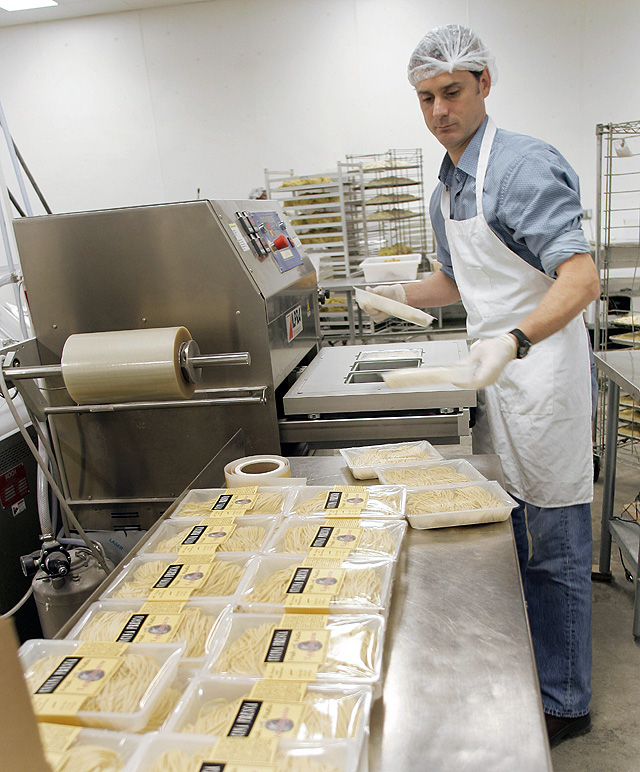Price of plastic skyrockets
Hurricane takes toll on industry
Decades ago, before the invention of plastic, Italian pasta makers wrapped their hand-stuffed ravioli in paper tied with a coarse string.
Jay Beattie, a gourmet pasta manufacturer, jokes he may have to revert to his ancestors’ choice of packaging. It would be cheaper than plastic, the material he has used for years to package his line of hand-cut fettucini, potato gnocchi and pumpkin ravioli.
Of all the raw materials that have seen price hikes since hurricanes ravaged the Gulf Coast – including plywood, drywall and metal – few have seen as sharp a rise in prices as the plastic industry. Prices for the three most common resins used to make plastic have jumped between 20 and 30 percent since August – compared to post-Katrina increases of 1.8 percent in cement, 2 percent in plywood and 6.5 percent in structural steel, according to analysts and trade publications.
The price hikes are being felt everywhere, from public works projects to grocery store shelves.
“Plastic is a huge part of our business, and we’re seeing an increase in every single plastic thing,” said Beattie, rattling off the different types of containers he uses to package his gourmet goods at Cucina Fresca, the Seattle-based pasta business he owns.
Raw materials of all kinds have been hurt by the spiraling cost of oil, which soared past $70 a barrel in the wake of the hurricane, and natural gas, which went from $10 per million British thermal units to over $14 per million British thermal units.

Jay Beattie, owner of the Cucina Fresca pasta company in Seattle, packages egg linguine into plastic trays. Of raw materials that have seen price increases as a result of devastating hurricanes in the South, few have been as sharp as the rise in prices in the plastic industry.
But plastic suffered from a triple whammy. The first blow came to resin factories, the majority of which are based in the Gulf Coast and were forced to shut down during the storms, creating a backlog. Second and third is the fact that plastic – unlike wood, cement and other raw materials – uses natural gas twice: once to generate the power needed to run the plastic factory and a second time as the key ingredient used to make the plastic resin.
Hit by all three, the Dow Chemical Co. plastic factory in Hahnville, La., on the outskirts of New Orleans, was forced to cancel more than 1,000 contracts to customers ranging from Rubbermaid to Clorox, which rely on the factory for the raw polyethylene and propylene pellets used to make their plastic wares and jugs.
They were far from alone: One by one, resin factories run by Exxon Mobil, Chevron Phillips, Shintech Inc. and Formosa Plastics Corp. invoked their act-of-God clauses to get out of their contracts, raising prices and delivering weeks off schedule.
The result is that three of the most common types of plastic resins have gone from between 55 cents and 64 cents per pound in July, to between 70 and 80 cents a pound last week – with another 8 cent rise projected by the end of November, according to Plastic News, an Akron, Ohio-based trade publication. The ripple effect is being felt across the country in the cost of everything from plastic knives and forks to Styrofoam cups to polyethylene (PVC) pipes used in municipal sewer and water projects.
“We haven’t seen any plastics spared,” said Mike Levy, the executive director of the Polystyrene Packaging Council, an industry group.

